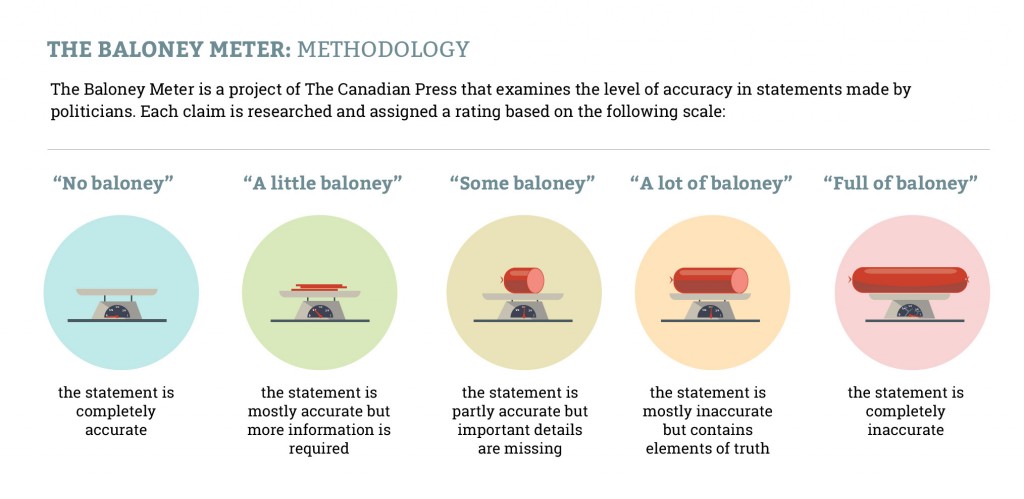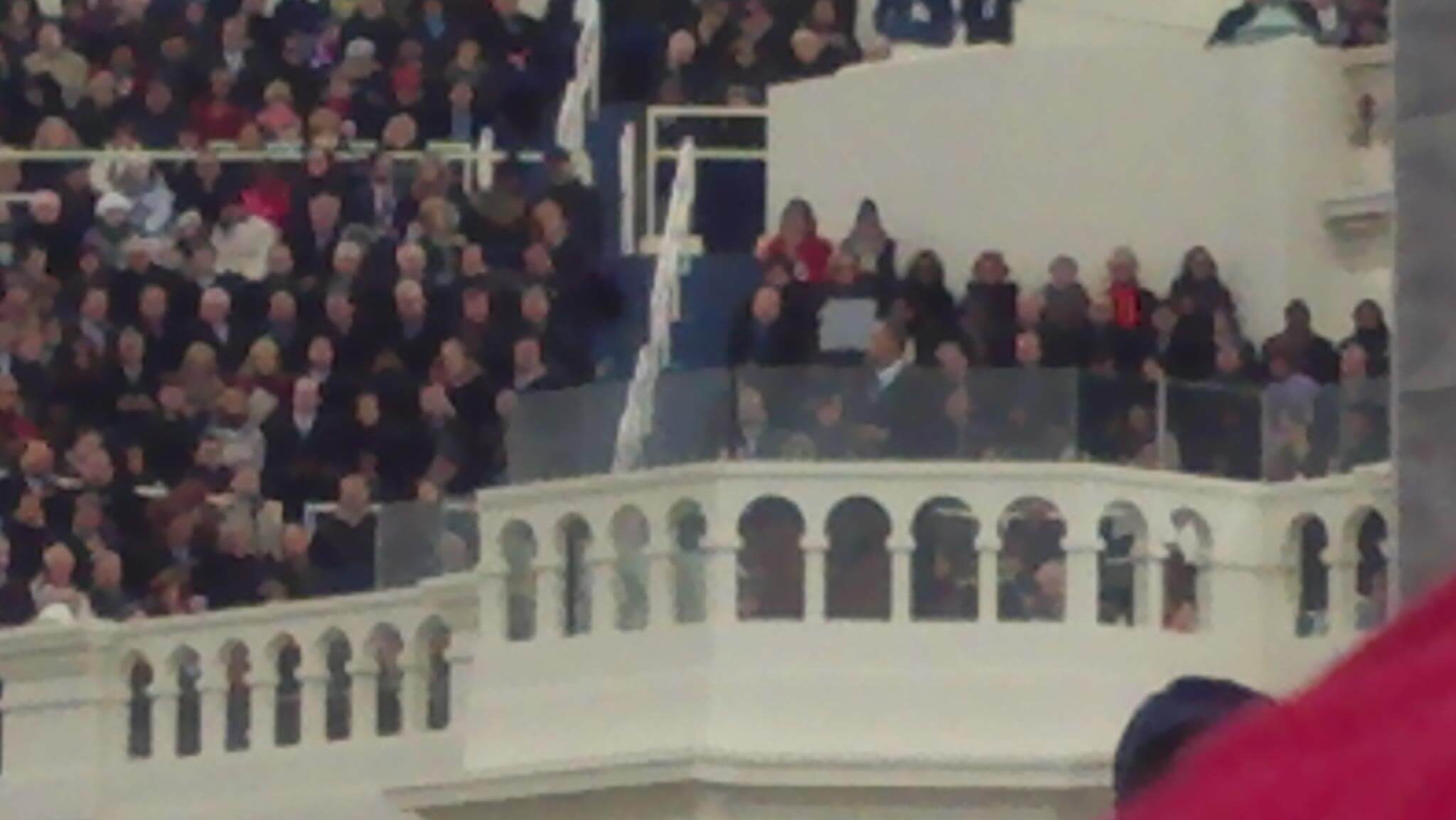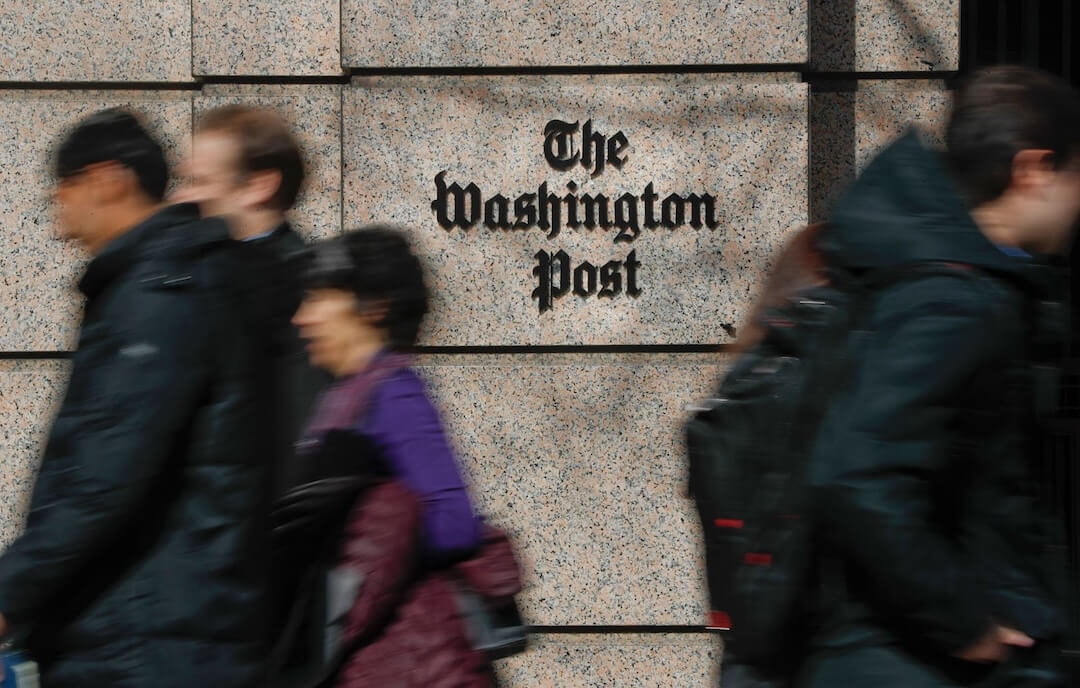There was the one on the effects of marijuana, or the one about greenhouse gas emissions falling for the first time. Also, the one on when the government started running deficits. No, these aren’t the topics of conversation cards for shy political junkies, but fact-checks published in the past few months in Canada.
Canadians vote for a new government today, and the longest electoral campaign in the recent history of their country has likely been the most fact-checked too. Leading this effort have been FactsCan and the Canadian Press, with its Baloney Meter.
FactsCan is an independent, non-partisan website launched in early 2015. The site’s co-founders – Dana Wagner, Jacob Schroeder and Tyler Sommers – are volunteers and financed their start-up costs through an Indiegogo campaign. Even though at $ 5,000 CAD their target was relatively low, the fact that it was 167% funded does seem to indicate a pent-up demand for fact-checking in Canada. FactsCan’s articles are thoroughly researched and the team is admirably transparent with their reaction to scrutiny.
The Baloney Meter launched in April 2014 as a service of the Canadian Press (CP), a wire service. Baloney Meter fact-checks are very clearly structured and, relying as they do on a newsroom of experienced journalists, elegantly written. Unlike other fact-checkers, who mostly publish their articles on a dedicated portal that is free to access, the Baloney Meter is part of the Canadian Press’ paid services. This is an interesting business model for external fact-checkers to consider, though in the CP’s case it means fact-checks appear only on the pages of clients that choose to carry the story.
These two aren’t the only Canadian fact-checkers, but they are the ones to watch. I spoke to the co-founders of FactsCan and to Heather Scoffield, Ottawa bureau chief for the Canadian Press, to get their opinions on the state of fact-checking in their country.
Perhaps predictably, they all think demand for fact-checking has increased in these elections, particularly on Twitter. Other media outlets also appreciate the fact-checks. Scoffield can say this with some certitude, given that during elections Canadian Press clients “need to pay a premium to receive [Baloney Meter], and they do so.”
As in other countries, the popularity of fact-checking has also led to its misuse by politicians. The governing Conservative Party published campaign material on Twitter captioned ‘Fact-check’, even as there was little fact-checking going on. In an other incident, the Green Party’s leader tweeted “Sorry Mr Harper, fact-check” with a video of her fact-checking Prime Minister Stephen Harper. One of these fact-checks was in turn fact-checked by FactsCan – and found lacking.
The fact-checkers think they have helped shape the understanding of certain key issues during the elections. Scoffield says Baloney Meter articles have ended claims from being circulated; in the most recent occurrence, opposition parties mostly dropped a claim that the government had run eight consecutive deficits (there were six, as CP pointed out). The FactsCan team believes it was the first to call out the inaccurate characterization of the powers of SIRC, an independent body, over the actions of CSIS, the Canadian intelligence agency.
Compared to the USA (with its plethora of fact-checkers), Canada still seems relatively under-checked. Schroeder thinks it is just a matter of reaching a “tipping point”, while Scoffield justifies it with reference to the “1-to-10 rule”, which applies the rough ratio of the two countries’ populations to other cross-country comparisons.
What will happen with elections over? “We certainly plan to continue”, Scoffield tells me, though The Baloney Meter will revert to its pre-election rhythm of two fact-checks a month. FactsCan will take advantage of the post-electoral lull to seek funding for a full-time position. According to Wagner, the business model for FactsCan’s future will involve a mixture of “crowdfunding, institutional donors, and services such as selling content”.







